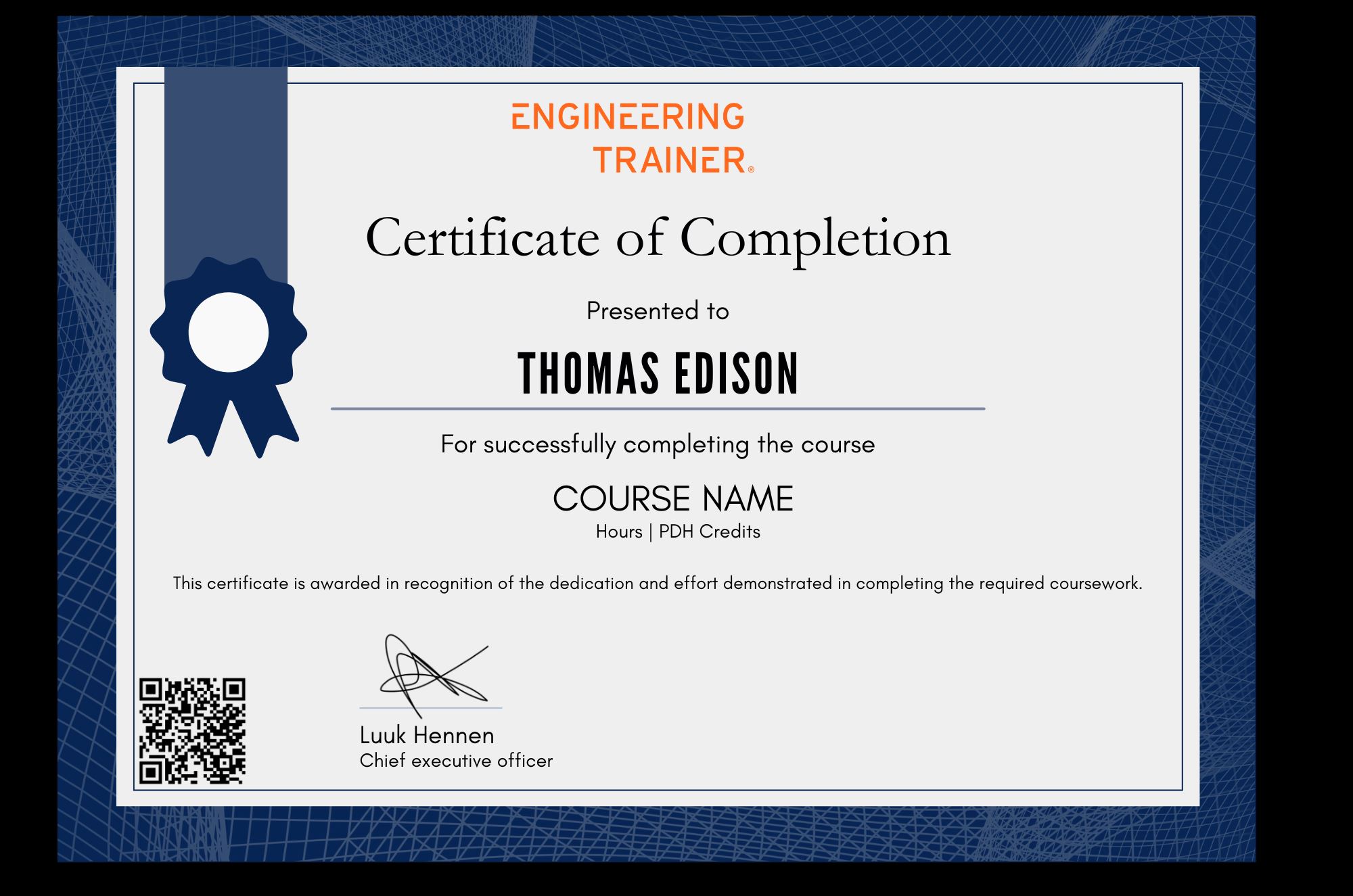FEA Validation: How to review an FEA study
About the course
FEA (Finite Element Analysis) is used regularly for the analysis of structural components or loading patterns which cannot be assessed using analytical design rules. Non-specialist engineers are often tasked with managing such studies, defining the scope of the study or approving the study. For engineers in such a role understanding the work flow of an FEA study and how to verify the robustness of the results is a valuable skill.
This training course takes the participants through the steps in a linear FEA study, from defining the problem and boundary conditions, to how the results should be presented in a usable way. For example it is shown which grid types are possible, when each would typically be used and what is a realistic grid density. The documentation that should be provided with the results is discussed and industry standard analysis techniques for high stress locations are explained.
The course consists of 24hr of live sessions with the instructor. All training content is provided through your EngineeringTrainer account.
Learning Outcomes
After this course, you...• understand the key steps in an FEA study from defining the problem to determining the conclusions,
• know what key points of attention the non• specialist should have when reviewing,
• have been shown best practices for defining the scope of an FEA study,
• have seen typical element types and the applications of each element type,
• familiar with what analysis evidence should be present as part of the reporting,
• have seen the fundamental equations being solved in an FEA study,
• have seen first hand how an expert reviews an FEA study and how they deliver their comments,
• can play an effective role in ensuring the quality of FEA workpackages.
Who should attend this course
• Non-specialist engineers involved with FEA studies, for example those involved in managing a study, the scope definition or approval.Prerequisites
No specific prerequisites, though an appreciation of how the results of an FEA study are used in an engineering project is beneficial.Program & Details
-
What is the aim of FEA Study?
Live
1. Problem definition
2. Good and bad examples of problem definition
3. When to use FEA?
4. Overview of the work flow in an FEA study
5. What are the review moments in this workflow
6. Verification and validation, what is meant by this? -
What is linear elastic FEA?
Live
1. Splitting the problem up into a number of elements
2. Types of mesh (beam, shell, brick, symmetric)
3. Typical application of each type of mesh
4. Simple Finite Element Representation
5. Gauss Elimination to solve
6. Conditioning of the matrix and singular matrices
7. Tensor stresses, principal stresses and Von Mises stress
8. What load cases to expect?
9. Linear addition of load cases -
Setting up the model
Live
1. Boundary Conditions
2. Dimensions
3. Material properties
4. How to report these properties
5. Simplifications, symmetry planes, is the model unnecessarily complex, could some parts not just be done with a hand calculation?
6. How to check robustness (grid sensitivity)
7. How should mesh robustness be reported
8. Numerical discontinuities due to each type of mesh
9. Effects of physical discontinuities
10. Examples of things that can go wrong, that you wouldn't expect. -
How should the results be explained?
Live
1. 3D images to show the results - what stresses am I seeing?
2. Stress averaging, interpolation, gauss points
3. Justification why can the results be trusted - what questions to ask FEA engineer
4. Explanation of high stresses
5. Numerical discontinuities, why do they occur and why can these be ignored
6. Axes and scaling of results figures
7. Sufficient results and documentation? -
Do the conclusions lead to concrete action?
Live
1. Is the initial question answered?
2. How robust are the conclusions to be drawn from the results?
3. Summary/what you need to see
4. Overview of what to expect in a report -
Examples of Company Projects
Live
A good way to apply the skills learnt in this course is to apply these to recent or current FEA studies.
If the participants are happy to share these FEA reports with Mart, he will:
- review these studies and give his feedback on the reports
- invite the engineers to share and discuss the feedback they gave
- suggest potential improvements based on the knowledge built up in this course
Certification

Contact us to Learn More

Why choose EngineeringTrainer
-
Unlimited Team-wide Access
-
Advance Technical Competences
-
Courses by Industry Authorities
Since using EngineeringTrainer our internal mentorship has a much more matured character.
Logan Chapman - COO at Chapman Consulting Inc.








